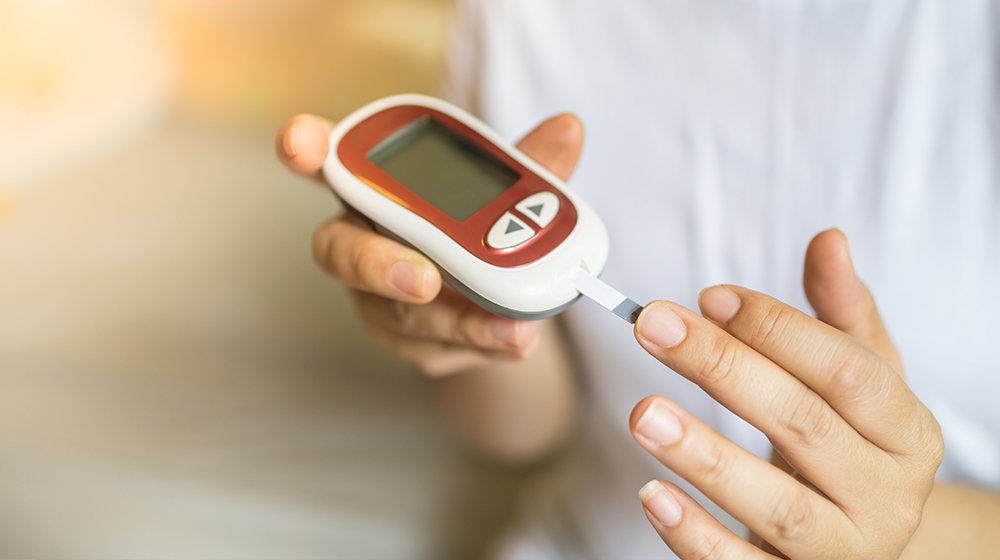Diabetes is a chronic health condition that affects millions of people worldwide. Managing blood glucose levels and other aspects of diabetes care can be challenging. However, advances in digital health technologies are making it easier for people with diabetes to monitor their condition and maintain better control. In this article, we will explore how digital tools are revolutionizing diabetes management.
Constant Glucose Monitoring
One of the most significant improvements has been the development of continuous glucose monitoring (CGM) systems. Traditional fingerstick testing requires multiple daily punctures to check blood sugar levels. CGMs avoid this inconvenience by using a small sensor inserted under the skin to constantly monitor glucose in interstitial fluid. Advanced CGM systems can now monitor glucose readings every 5 minutes providing a detailed glimpse into how foods, medications, exercise and other factors impact blood sugar. With alerts for high and low readings, CGM allows for timely treatment decisions. Many newer CGM systems are also now able to automatically suspend insulin delivery from insulin pumps during hypoglycemia, further improving safety. The round-the-clock tracking ability of CGM has been shown to lower A1c levels and reduce complications over the long term.
Insulin Delivery Advancements
While multiple daily injections have long been the standard insulin administration method, pump therapy offers greater convenience and precision. Insulin pumps deliver short- or long-acting insulin continually through a small catheter placed under the skin. Some advanced pumps are now integrated with CGM to form a “hybrid closed loop system” where the pump automatically adjusts insulin dosing based on interstitial glucose readings without manual intervention. Fully automated artificial pancreas systems without any fingerstick testing are also being developed. Portable patch pumps similar to CGM sensors are also emerging as an alternative to traditional bulky pumps. The customizability of pump therapy and its round-the-clock insulin delivery make it easier to match insulin dosing to a person’s lifestyle and needs.
Mobile Applications
Mobile apps have become invaluable Digital Diabetes Management
. In addition to data uploading from glucose meters and other devices, apps provide food databases to aid carb counting. Bolus calculators within apps help determine mealtime insulin doses. Apps also enable setting of personal diabetes management plans and goals. Alarms, reminders and dashboards keep track of key metrics like blood sugars, carbohydrate intake, insulin doses and medication schedules. Perhaps most significantly, apps facilitate sharing of all diabetes data with care providers to aid remote monitoring and collaborative decision making. Data aggregation and analytics further empower people to identify patterns and proactively address issues.
Telehealth Support
The unprecedented connectivity provided by digital health tools is opening doors to convenient virtual care delivery. Telehealth options through phone, video or messaging platforms enable diabetes healthcare teams to stay connected with their patients remotely. Brief virtual visits can be scheduled as needed for diabetes management support. Care providers benefit from remote access to comprehensive patient data reported through digital devices and apps to conduct virtual consultations. This helps address issues in a timely manner without needing an in-person visit each time. Telehealth also expands access to specialized diabetes services in rural or resource-limited areas. Virtual support groups and educational platforms further supplement in-person visits. The flexibility of integrated telehealth may prove crucial for optimized long-term diabetes management.
Challenges and Future Outlook
While digital solutions are proving transformative, challenges still remain regarding data security, device reimbursement challenges and the digital divide faced by disadvantaged populations with limited access. Device interoperability is another area requiring further improvement to streamline data sharing. Despite hurdles, ongoing advances are only enhancing the capabilities of diabetes digital health technologies. Upcoming developments may include more sophisticated algorithms powering fully automated insulin delivery via “smart insulin” systems. Biosensors non-invasively measuring blood glucose through tears or skin are also in development. Integration of AI and predictive analytics with a wider range of patient-generated data hold promise for identifying metabolic patterns ahead of time. Future diabetes management will likely witness even tighter integration between people, their care teams and an array of digital assistants proactively supporting optimal health outcomes. With collaboration across stakeholders, the potential for digital solutions to revolutionize diabetes care globally can be fully realized.
The past decade has seen tremendous growth in diabetes digital health tools tailored for round-the-clock glucose monitoring, automated insulin delivery, comprehensive data tracking and virtual care access. Ongoing innovation is making diabetes management increasingly convenient while empowering individuals to stay engaged with their condition. Integrated digital ecosystems now enable collaborative care teams to address issues in a prompt, preventive manner from anywhere. While challenges persist, digital transformation holds immense promise to elevate long-term outcomes for the millions worldwide affected by this chronic condition. By embracing available technologies, people with diabetes can now better navigate lifestyle modifications, make informed decisions and access support as needed to achieve optimal health.
*Note:
1. Source: Coherent Market Insights, Public sources, Desk research
2. We have leveraged AI tools to mine information and compile it


